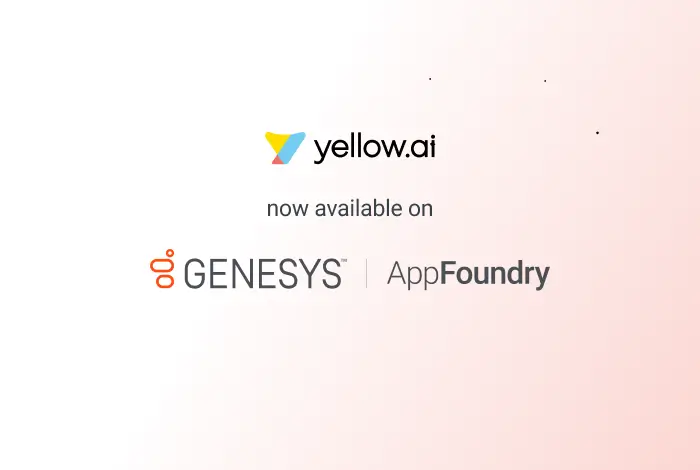In today’s times, conversational AI solutions are key critical enablers for enterprises looking to provide seamless and intuitive customer experiences. But why is it a must? Because conversational AI solutions have the ability to capture enormous amounts of data and provide a complete picture of customer preferences and behavior to the enterprises. What’s equally important is representing that valuable data in meaningful, understandable and intuitive formats for businesses to make quick, actionable decisions.
Bearing this in mind, we are excited to bring: User Journey Visualization.
With Yellow.ai’s newly built User Journey Visualization, businesses will gain visibility into how their customers are conversing with the bot, what they are talking about and why, where they are dropping off, and what intents they are triggering during the user lifecycle. The businesses will gain deeper insights into the customer journey, such as major drop-off points or an improvement in the flow that would help them to improvise the conversational flow on the fly.
User journey visualization shows areas of business processes where there is room for optimization leading to maximum conversion. With this, enterprises can now:
- See how users are conversing with the bot, where they drop off or change paths
- Identify good/poorly performing conversational flows and steps using Visualization Insights
- Build hypothesis for how the users are conversing and why
- Improve conversation design and business processes
- Improve chatbot engagement and intent completion.
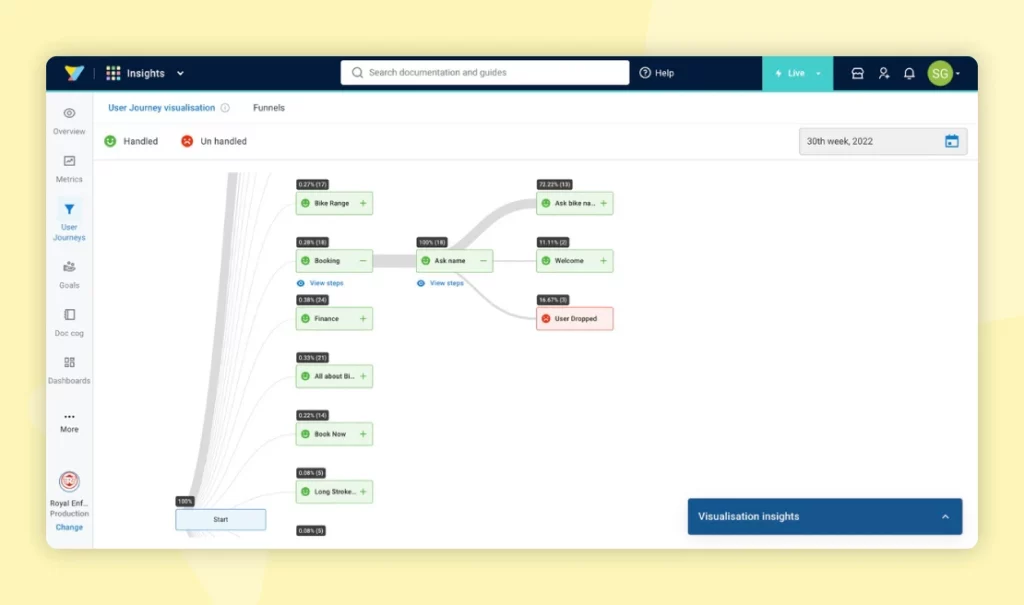
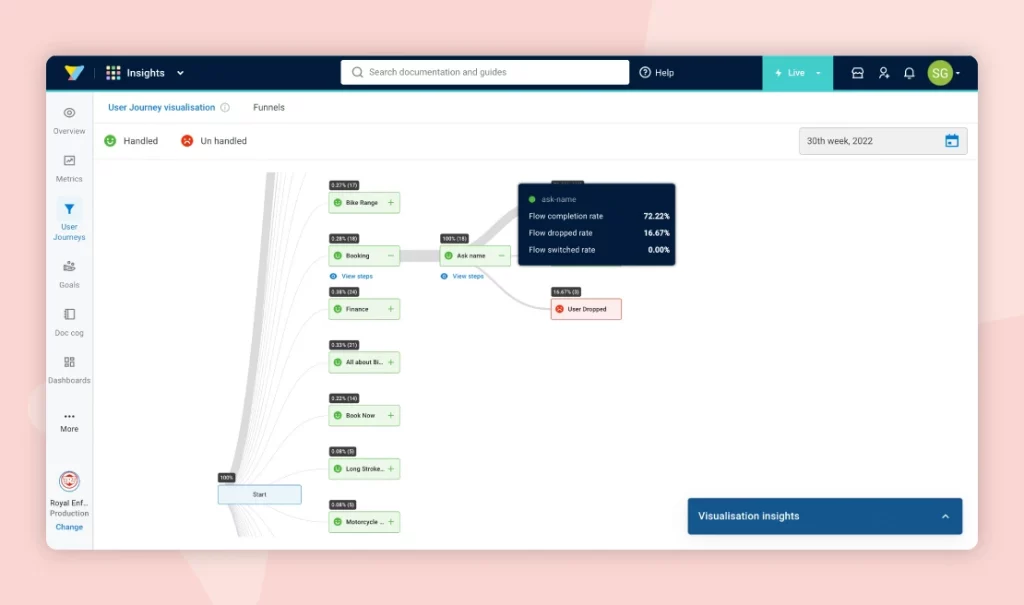
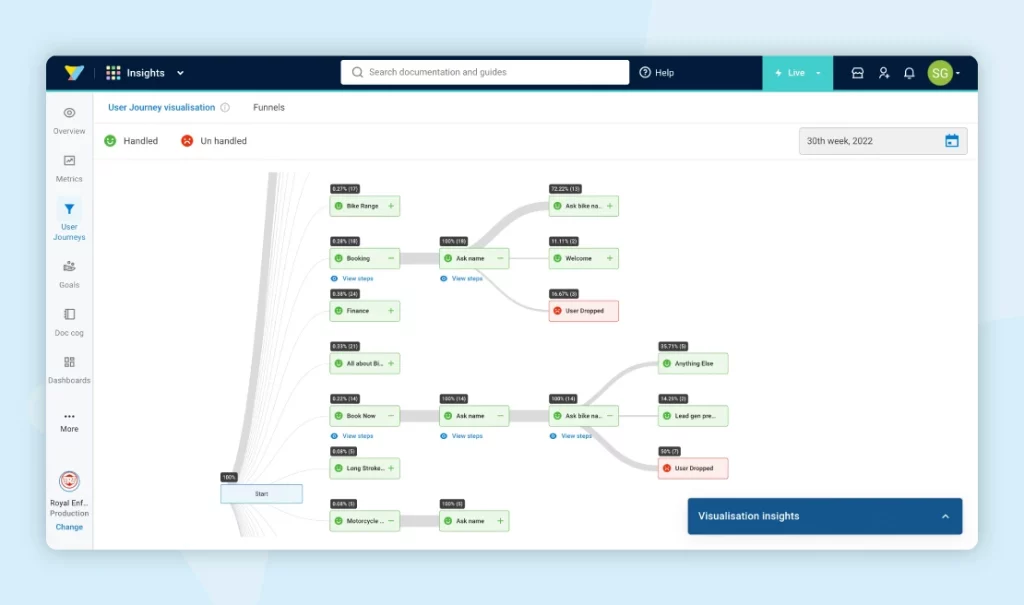
How can user journey visualization help you improve customer experience?
Step 1: Identify gaps and major drop-off points
- Understanding the user journey requires you to study how your users move through the conversation funnel. This analysis helps you identify where users leave that funnel.
- Using Visualization Insights, you can directly look at the good/poorly performing flows and steps. These insights will automate the journey analysis process and provide direct actionable data.
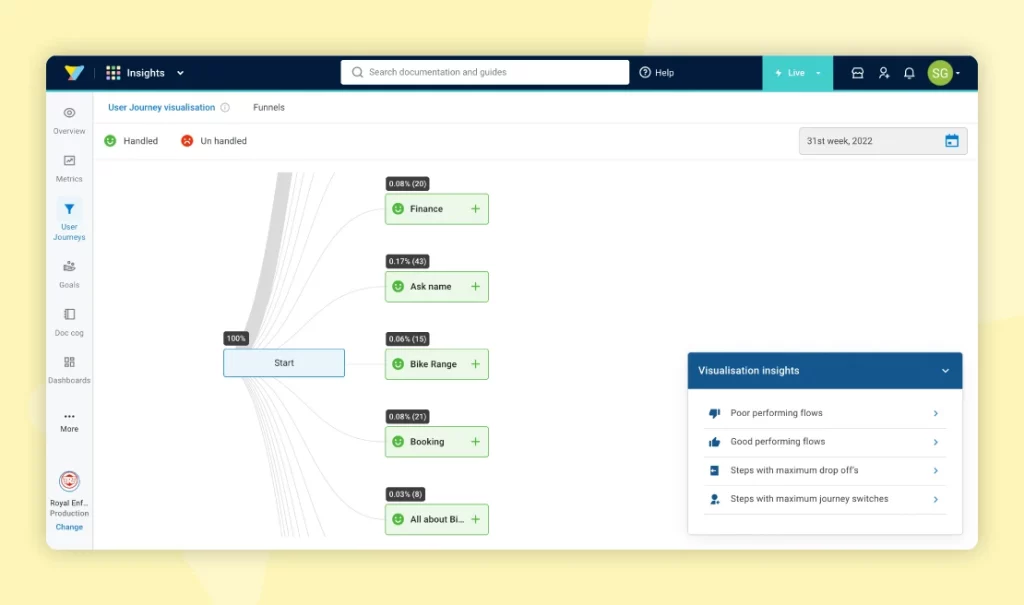
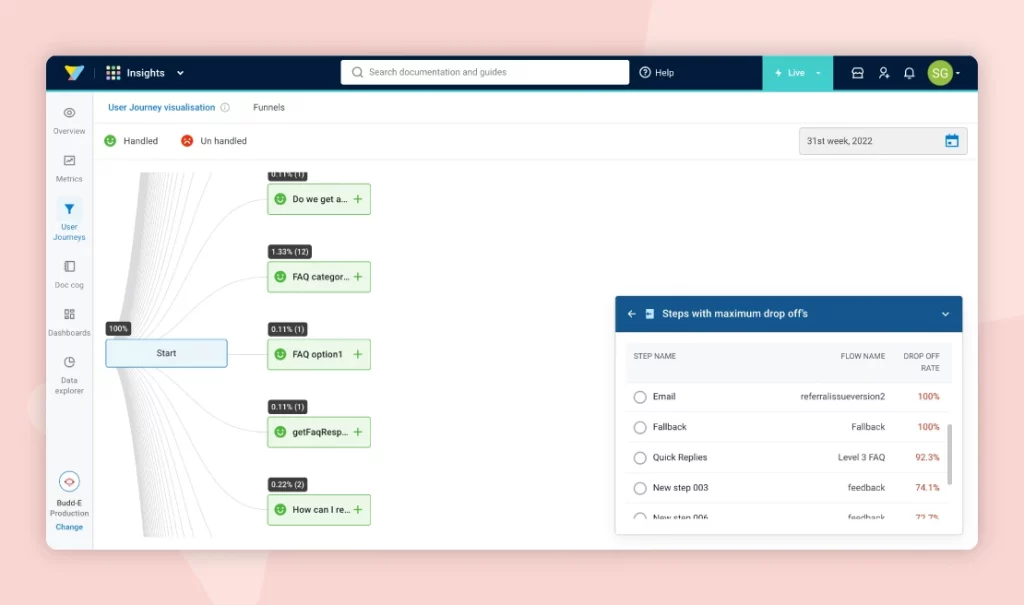
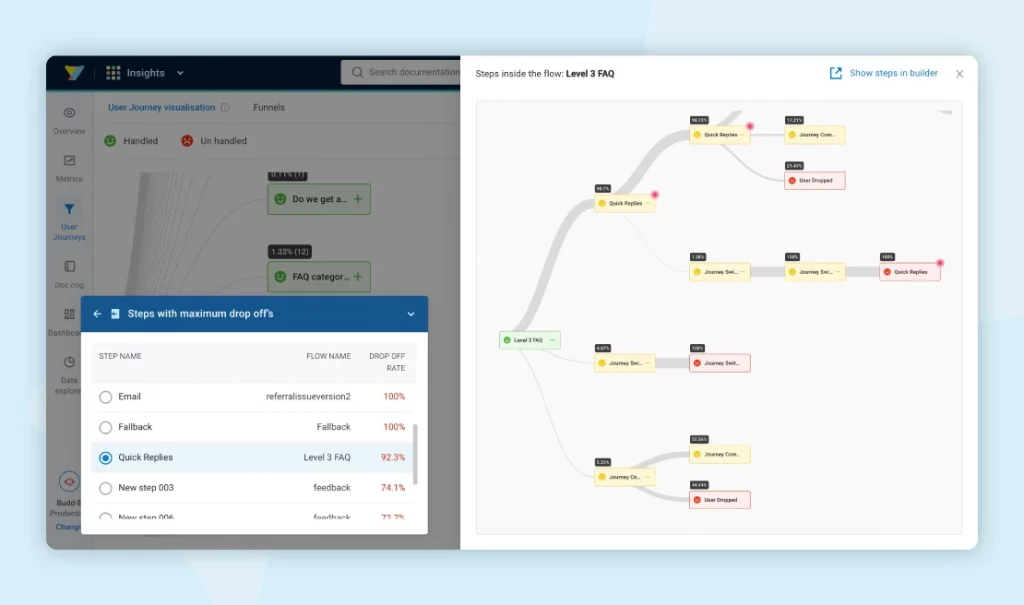
Step 2: Make changes to the conversational design
- Once the business gains clarity about the problem in the conversation funnel, one can make changes to the way things are shown to the user in the bot.
- Eliminate steps that are complicated and unnecessary.
- Build the main menu in such a way that most users won’t have to search for the intent they came on the bot for.
- Visit Builder directly from the ‘step inside the flow’ modal in Visualization Insights and make necessary changes to the concerned step or flow.
Step 3: Figure out if the improvised conversation flow is working (and what isn’t)
- Let people use the bot for a week
- Revisit the changes done to understand whether the conversion funnels have improved from the last week.
- Get week to week improvements in terms of completion rate of conversations flow
- Check the CSAT score for users of the chatbot in the last 7 days as compared to past data.
Step 4: Go to step 1
The journey to better customer experience begins with understanding the user behaviors and user intent appropriately. User journey visualization enables businesses to identify the gaps with a bird’s-eye view, which further empowers them to alter the conversational design/business process.
Book your demo today





















